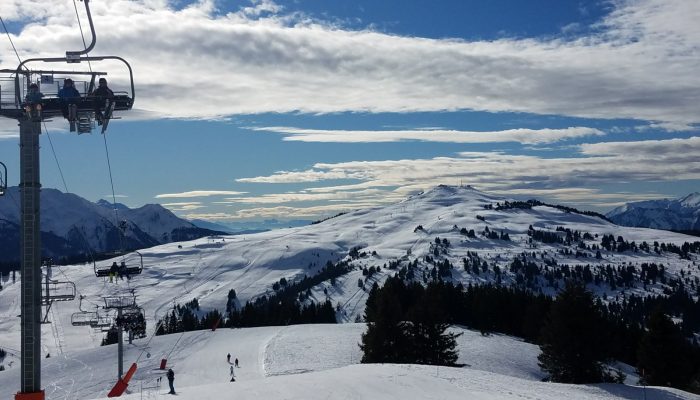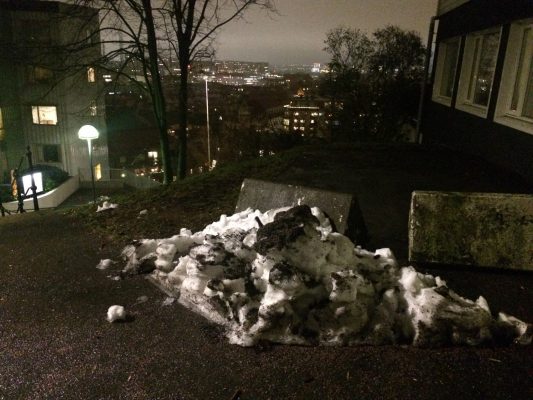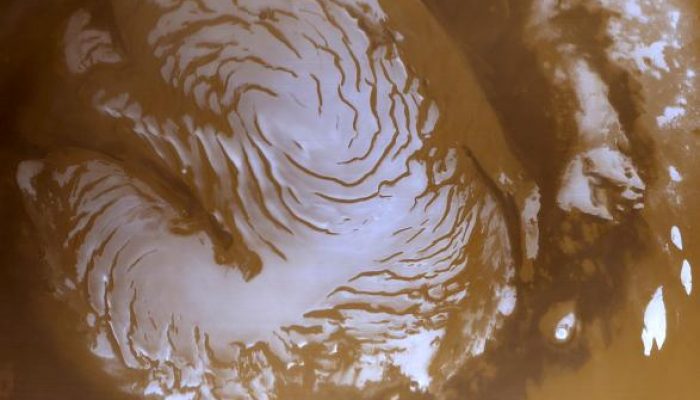Geothermal heat flux is the major unknown when we evaluate the temperature and the presence/absence of water at the bed of the Antarctic Ice Sheet. This information is crucial for the Beyond Epica Oldest Ice project, which aims to find a continuous ice core spanning 1.5 million years (see this previous post). A lot of work has been done* to determine geothermal heat flux under the entire Antarctic ...[Read More]
Image of the Week – Broccoli on Kilimanjaro!
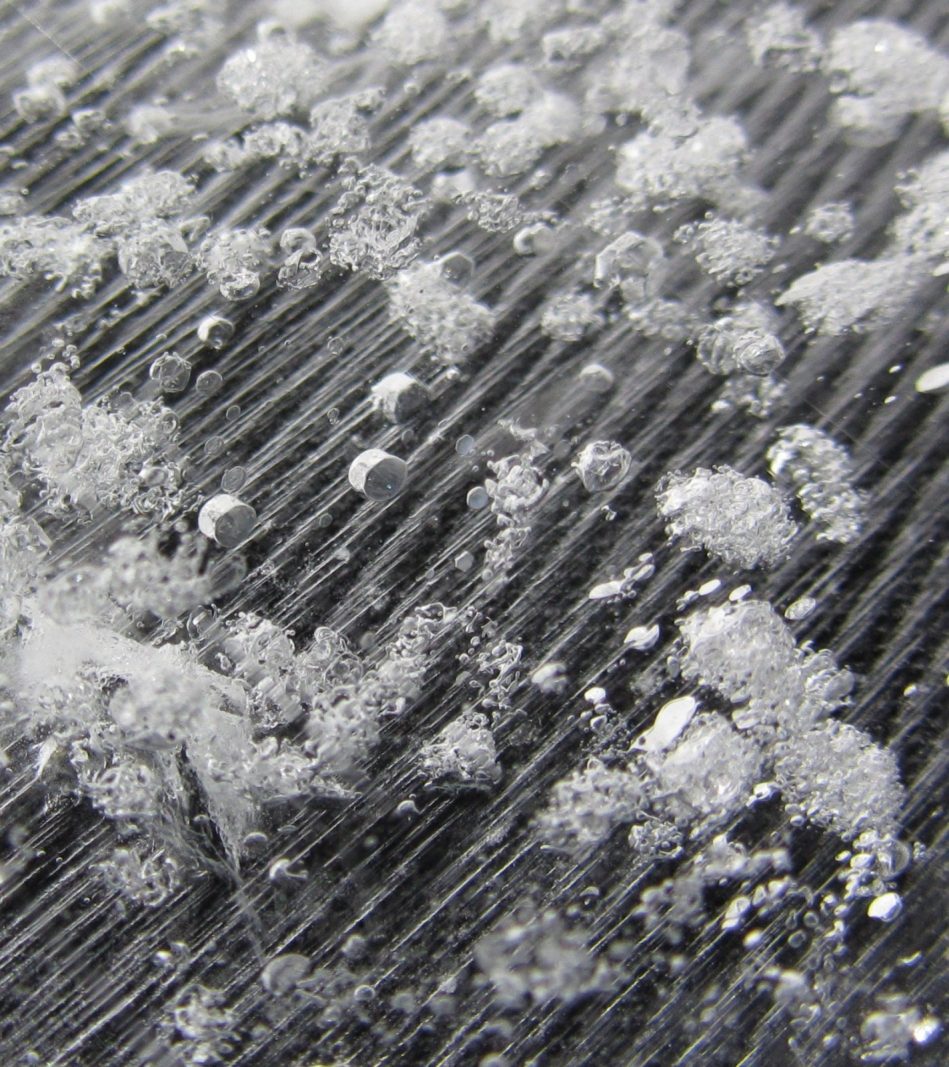
On the plateau of Kilimanjaro, Tanzania, the remnants of a glacier can be found and the ice from that glacier contains a rather interesting feature – Broccoli! Not the vegetable, but bubbles that look a lot like it. Our Image of the Week shows some of these strange “Broccoli Bubbles”. Read on to find out more about where these were found and how we can see them. There is not much ice left on the m ...[Read More]
Image of the Week – The colors of sea ice
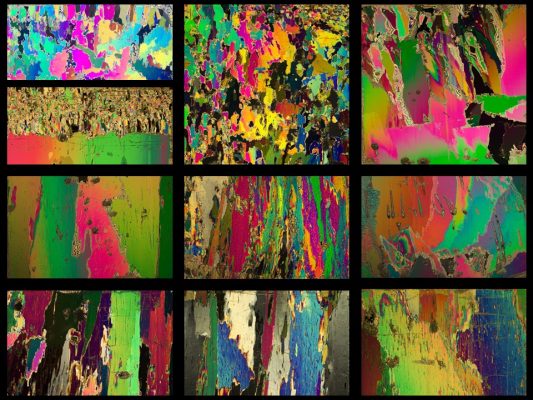
The Oscars 2018 might be over, but we have something for you that is just as cool or even cooler (often cooler than -20°C)! Our Image of the Week shows thin sections of sea ice photographed under polarized light, highlighting individual ice crystals in different colors, and is taken from a short video that we made. Read more about what this picture shows and watch the movie about how we got these ...[Read More]
Image of the Week – A Hole-y Occurrence, the reappearance of the Weddell Polynya
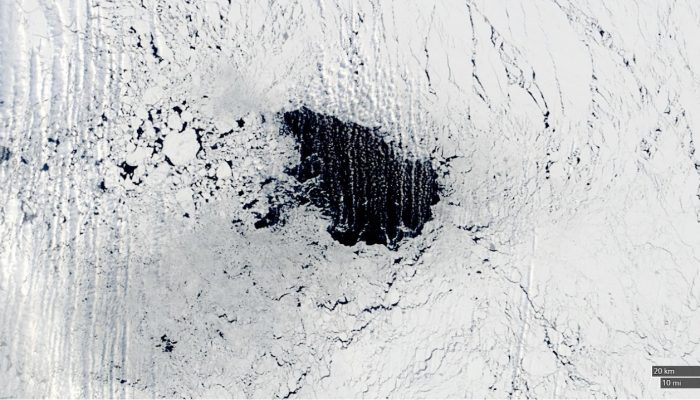
REMARK: If you’ve enjoyed reading this post, please make sure you’ve voted for it in EGU blog competition (2nd choice in the list)! During both the austral winters of 2016 and 2017, a famous feature of the Antarctic sea-ice cover was observed once again, 40 years after its first observed occurrence: the Weddell Polynya! The sea-ice cover exhibited a huge hole (of around 2600 km2 up to ...[Read More]
Image of the Week – The world in a grain of cryoconite
Microbes growing on glaciers are recognized for their importance in accelerating glacier melting by darkening their surface and for maintaining biogeochemical cycles in Earth’s largest freshwater ecosystem. However, the microbial biodiversity of glaciers remains mysterious. Today, new DNA sequencing techniques are helping to reveal glaciers as icy hotspots of biodiversity. To see a world in a grai ...[Read More]
Image of the week – Skiing, a myth for our grandchildren?
Ski or water ski? Carnival season is typically when many drive straight to the mountains to indulge in their favorite winter sport. However, by the end of the century, models seem to predict a very different future for Carnival, with a drastic reduction in the number of snow days we get per year. This could render winter skiing something of the past, a bedtime story we tell our grandchildren at ni ...[Read More]
Image of the Week – The Gap, the Bridge, and the Game-changer
The Gap, the Bridge, and the Game-changer are three series of satellites. They carry instruments that measure the microwave radiation emitted by the Earth (called passive microwave instruments), while flying 800 km above our heads at 7,5 km/s. Since the late 1970s, most sea ice properties (concentration, extent, area, velocity, age and more!) have been measured with such passive microwave instrume ...[Read More]
Image of the week – How hard can it be to melt a pile of ice?!
Snow, sub-zero temperatures for several days, and then back to long grey days of near-constant rain. A normal winter week in Gothenburg, south-west Sweden. Yet as I walk home in the evening, I can’t help but notice that piles of ice have survived. Using the equations that I normally need to investigate the demise of Greenland glaciers, I want to know: how hard can it be to melt this pile of ice by ...[Read More]
Image of the Week – Microbes have a crush on glacier erosion
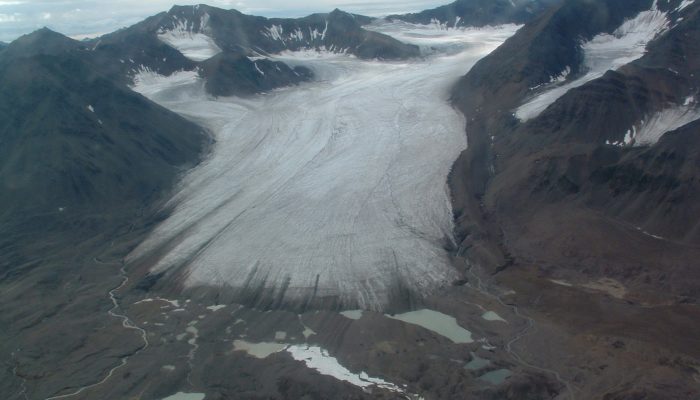
Glacier erosion happens at the interface between ice and the ground beneath. Rocks are ground down to dust and landscapes shaped by the flowing ice. While these might be hotspots for erosion, the dark and nutrient-poor sites are unlikely environments for biological activity. However, experiments suggest there may be novel sources of energy powering subglacial microbial life… Where there is water, ...[Read More]
Image of the Week – Ice caps on Mars?!
Much like our Planet Earth, Mars has polar ice caps too, one for each pole: the Martian North Polar Ice Cap (shown on our image of the week) and the Southern Polar Ice Cap. Yet, their composition and structure reveals these ice caps are quite different from those of Planet Earth… Mars refresher As a refresher, here are some Mars facts: Mars is the 4th planet from the sun. Its equatorial dia ...[Read More]

